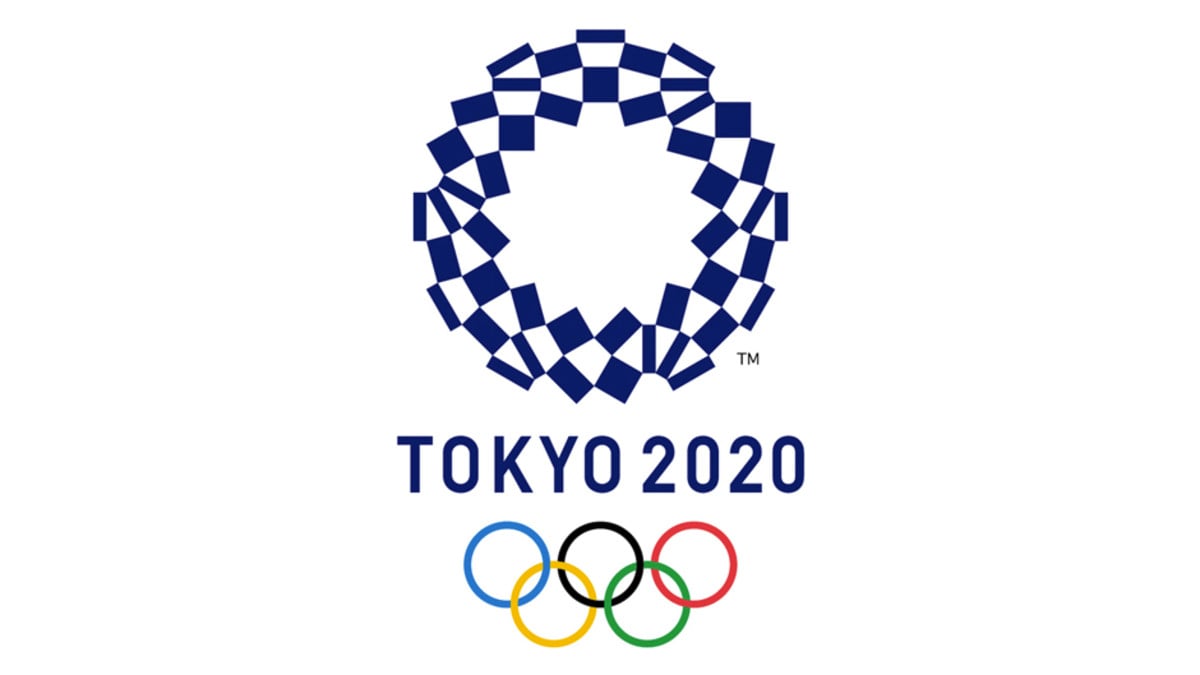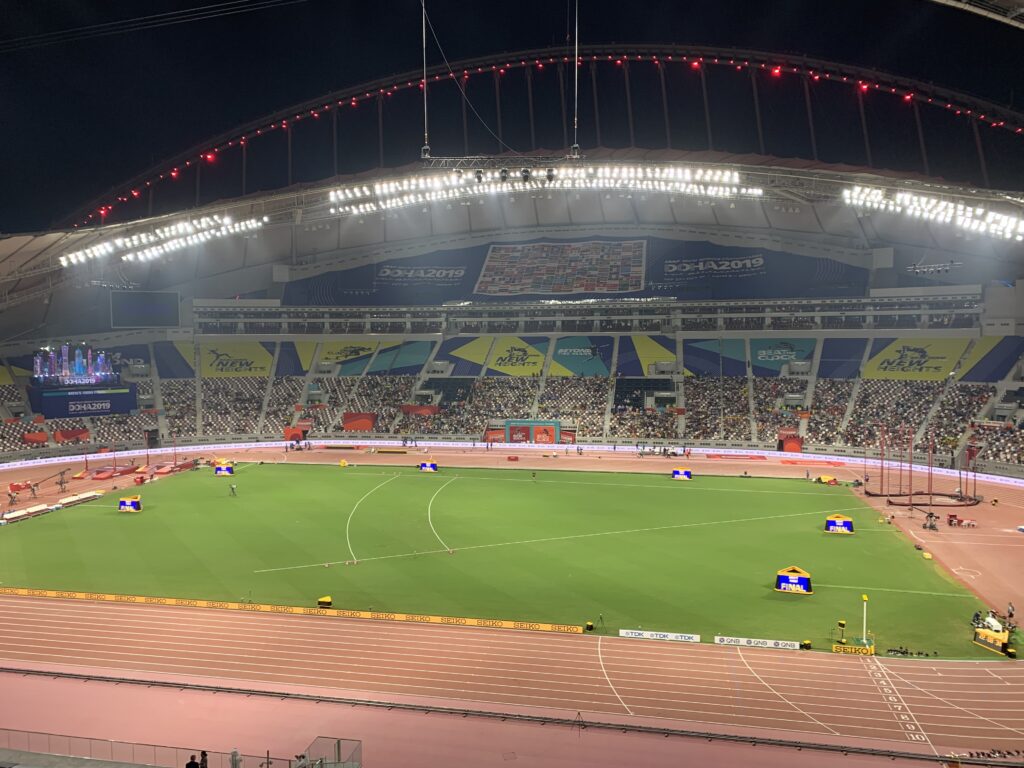There Won’t Be Any Spectators At the Olympics. That’s Not That Different From a Normal Track Meet. Except It Is.
By Jonathan Gault
July 15, 2021
Well, it happened. Last week, the International Olympic Committee and Tokyo 2020 Organizing Committee announced there will be no spectators at this year’s Olympics in Tokyo, which kick off on July 23 (track & field begins on July 30). It’s disappointing, given Tokyo 2020 announced three weeks ago that a limited number of Japanese spectators would be allowed, but an understandable decision considering the rising COVID-19 case numbers in Tokyo (1,149 new infections on Wednesday, the city’s most since January) and the slow vaccine rollout in Japan (as of Sunday, just 17.9% of Japan’s 126 million residents are fully vaccinated). The government of Japan also declared a state of emergency in Tokyo, which began on Monday and will last until August 22, and while that’s not as bad as it sounds, it is one of the key reasons cited for the spectator ban.
The obvious initial reaction: Man, that sucks. The Olympics just won’t be the same.
But is that actually true? We just wrapped a US Olympic Trials that drew an average of 5,197 fans per day — a little more than half of the roughly 9,000 allowed per day at Hayward Field.
Perhaps the Trials is an unfair example; TrackTown USA was forced to offer full refunds less than two months before the Trials began due to the uncertainty surrounding COVID restrictions in Oregon, which were then loosened right before the Trials began. So let’s look at the last global championships, the 2019 World Championships in Doha, Qatar. No one came…until the local organizing committee started busing in fans for the last few days. This is what it looked like for the men’s 100-meter final on day 2:
But that’s the World Championships, not the Olympics. And they were in Doha.
Okay, well I was in Rio in 2016 as well. Morning sessions there resembled a ghost town, and multiple evening sessions were less than one-third full.
That is not to say that big-time track & field cannot still draw on occasion. The 2015 Worlds in Beijing were well-attended; London packed the house when it hosted the 2012 Olympics and 2017 Worlds. But in this sport, even before the pandemic, a sparse crowd was the default setting.
So what to make of the Olympic spectator ban? (Some spectators may be allowed in events held outside the city, but for our track & field purposes, that’s not relevant).
The Japanese government spent $1.5 billion on a new 68,000-seat National Stadium that will now sit empty for the very event it was built for. Much of the Japanese populace, hosting the summer Games for the first time in 57 years, will miss their only chance to attend an Olympics on home soil.
The ones hit hardest are, of course, the athletes. And while they deserve fans in the stands to create an environment commensurate with the grandest stage in our sport, that is not the tragedy here. Over the past 16 months, athletes from every sport have been forced to compete with limited or no spectators. Thirteen NFL teams played an entire regular season without fans last year. Track & field has hardly been singled out (and again — pro runners are used to competing in front of sparse crowds).
Don’t expect the performances to suffer, either. Ryan Crouser and Grant Holloway set world records this year indoors with empty stands. The string of 5,000- and 10,000-meter world records we’ve witnessed over the past year has played out in front of reduced crowds or, in the case of Letesenbet Gidey, no crowd at all. It’s romantic to imagine that fans can will an athlete to a spectacular performance, but the reality is that the lack of pacemakers and Wavelight in Tokyo will have a far greater impact on times than any ban on spectators could possibly achieve.
No, the loss here is of a more personal nature. Track is not baseball, where any minor-league callup automatically gains a few million fans merely by donning the pinstripes of the New York Yankees. Many of the fans of a professional runner also happen to know that runner personally; during the US Olympic Trials, you couldn’t take five steps along the Hayward Field concourse without bumping into someone sporting a t-shirt personalized for their own Olympic hopeful (the Schweizer clan was particularly well represented: “Kickin’ for Karissa” shirts were everywhere).
Those close friends and family are part of an athlete’s journey. For the last five years, they’ve been there for the highs and lows. They’re supposed to be there at the end. This year, they won’t be. Which means we won’t be seeing someone like Matt Centrowitz lose his mind when his son wins a gold medal. That’s the real shame.
YOU WANT TO KNOW WHAT THE OLYMPICS IS ABOUT. THIS IS WHAT IT IS!! pic.twitter.com/sCz46zSd7n
— Leslie Jones 🦋 (@Lesdoggg) August 21, 2016
***
I know what I will miss most. It is the moment that has been the background on my iPhone for the past five years: the men’s 100-meter final. But not the race itself. The moment just before.
Most journalists covering an Olympics are given an “E” credential, which means you can get into any event you want. It’s one of the biggest perks of this job. It also means, theoretically, that if you don’t show up early enough to an event, you might not get a seat in the media tribune. In practice, this was not an issue in the athletics stadium at the 2016 Olympics in Rio. Except for the night of the men’s 100-meter final.
That night, I made sure to arrive early but still found the main tribune — and the rest of the stadium — packed. Everyone wanted to see this race. (Fortunately, there were seats available in the auxiliary media section).
Usain Bolt was part of it, sure. But it’s more than that. The men’s Olympic 100-meter final is the simplest, purest sporting event we have. Anyone can understand it. And the event truly spans the globe. Fifty-seven countries entered an athlete in the men’s 100 in Rio. Once it is over, there is no doubt: the winner is the fastest man in the entire world. Whether I write about track for the rest of my life or move into some other beat or profession, I will always care about the men’s 100 meters at the Olympics.
And in this case, the obvious initial reaction holds up: the men’s 100 meters really won’t be the same in 2021 without fans. Yes, the race is still happening, but the race itself won’t even last 10 seconds. What I’ll miss is the five minutes immediately before the gun is fired.
The cheers as the finalists run onto the track for the first time. The nervous energy reverberating around the stadium as they set their blocks and take their final strides. The screams as they’re introduced on the video board for the biggest race of their life.
Most of all, I’ll miss the silence. A roaring crowd can fill you with life, but there is nothing more powerful in a stadium than absolute silence. How many times in your life have you seen 60,000 people doing the same thing at the same time? The anticipation dripping from the rafters in those few seconds before the gun, the collective deep breath before the plunge…only a truly special event can create those feelings. Shutting up when the starter calls “set” is one of the few things still capable of uniting this world.
And that’s because, in that moment, the men’s 100-meter final is the most important thing on the planet. It’s rare for that to happen in sports, rarer still in this sport.
At 9:50 p.m. Japan Standard Time on August 1, I’ll be in the National Stadium in Tokyo. The men’s 100-meter finalists will take their positions. The starter will call “set.” A 68,000-seat stadium will fall silent. It will be the same as always. And so, so different.




